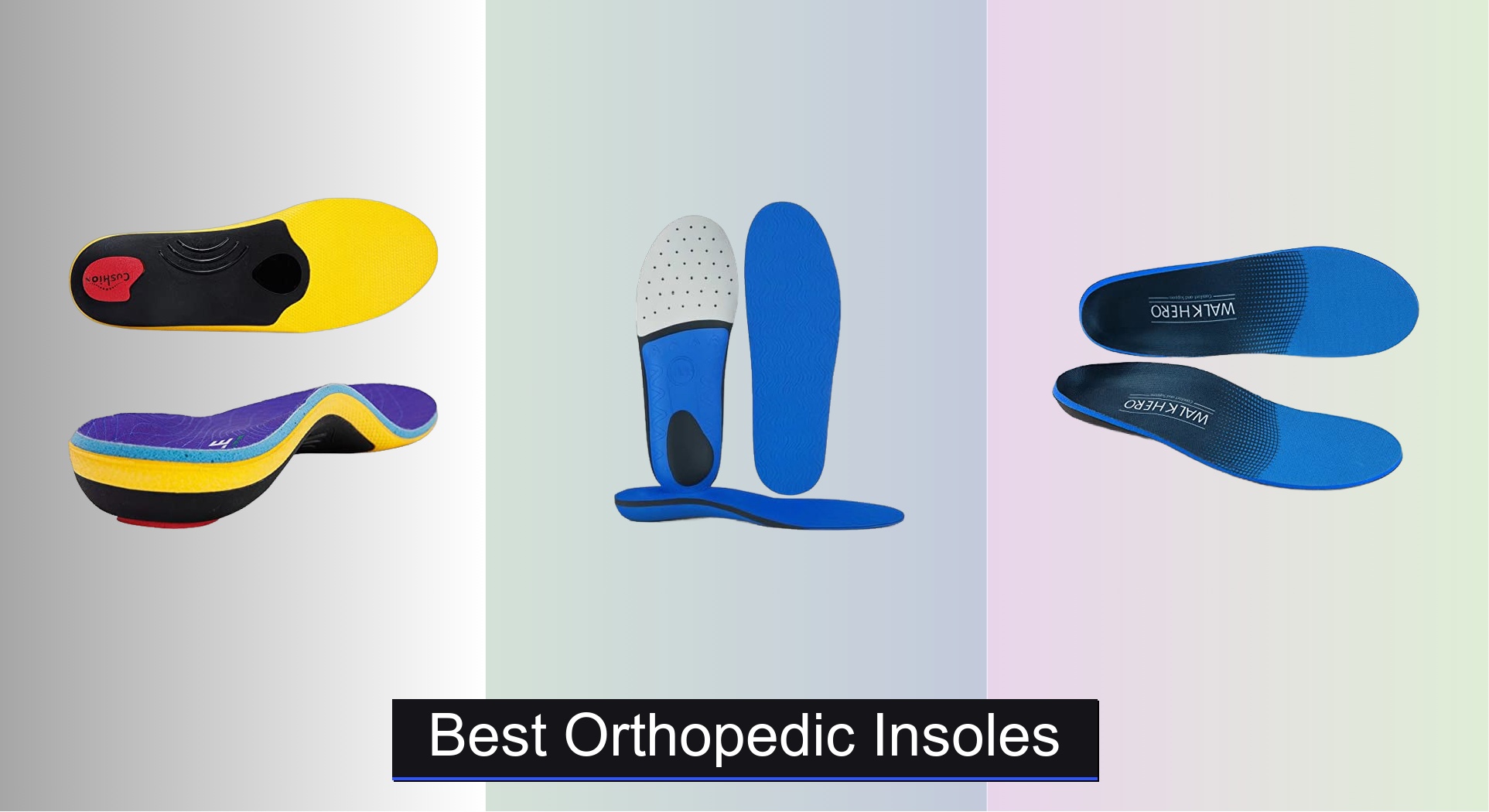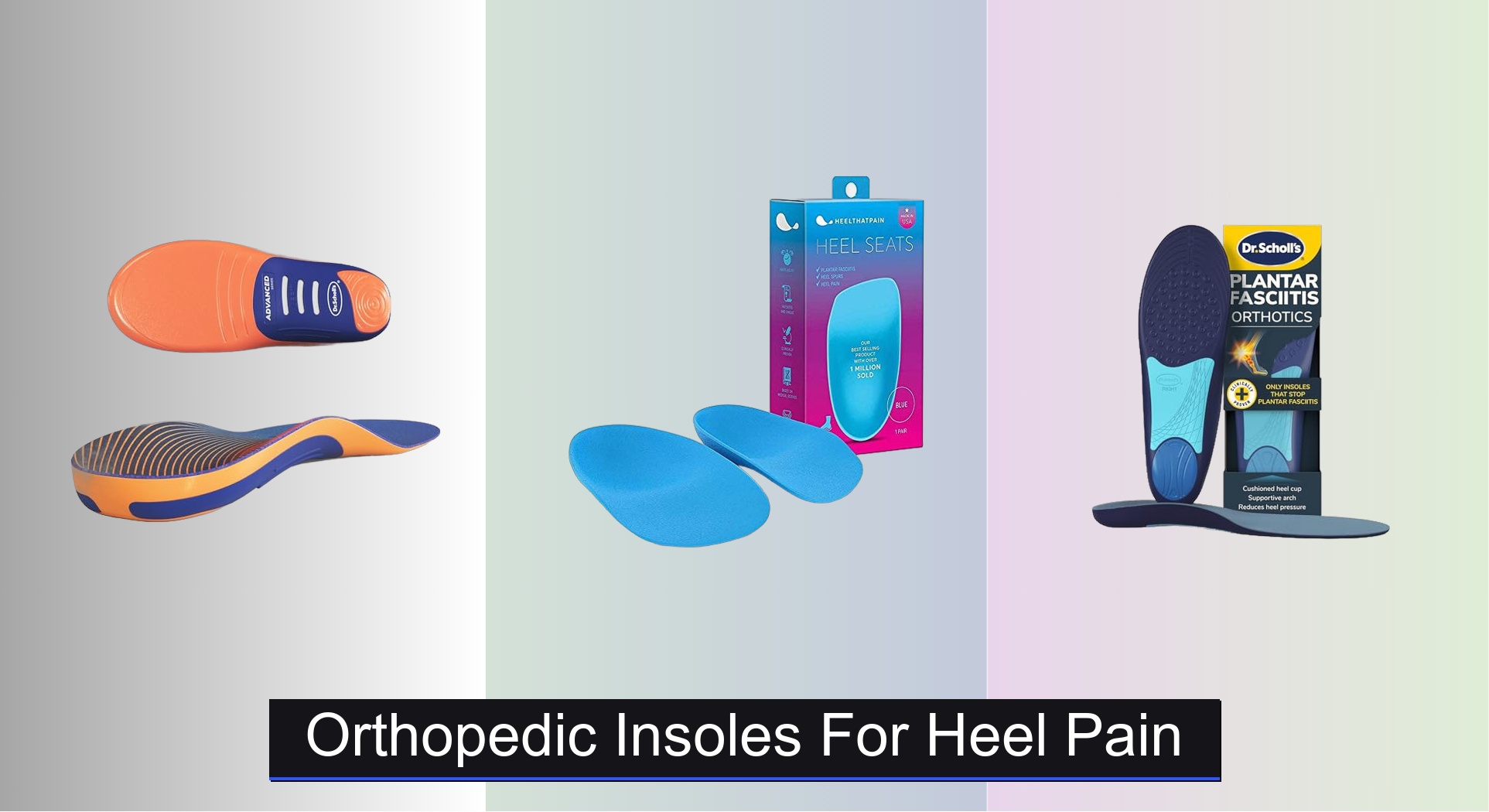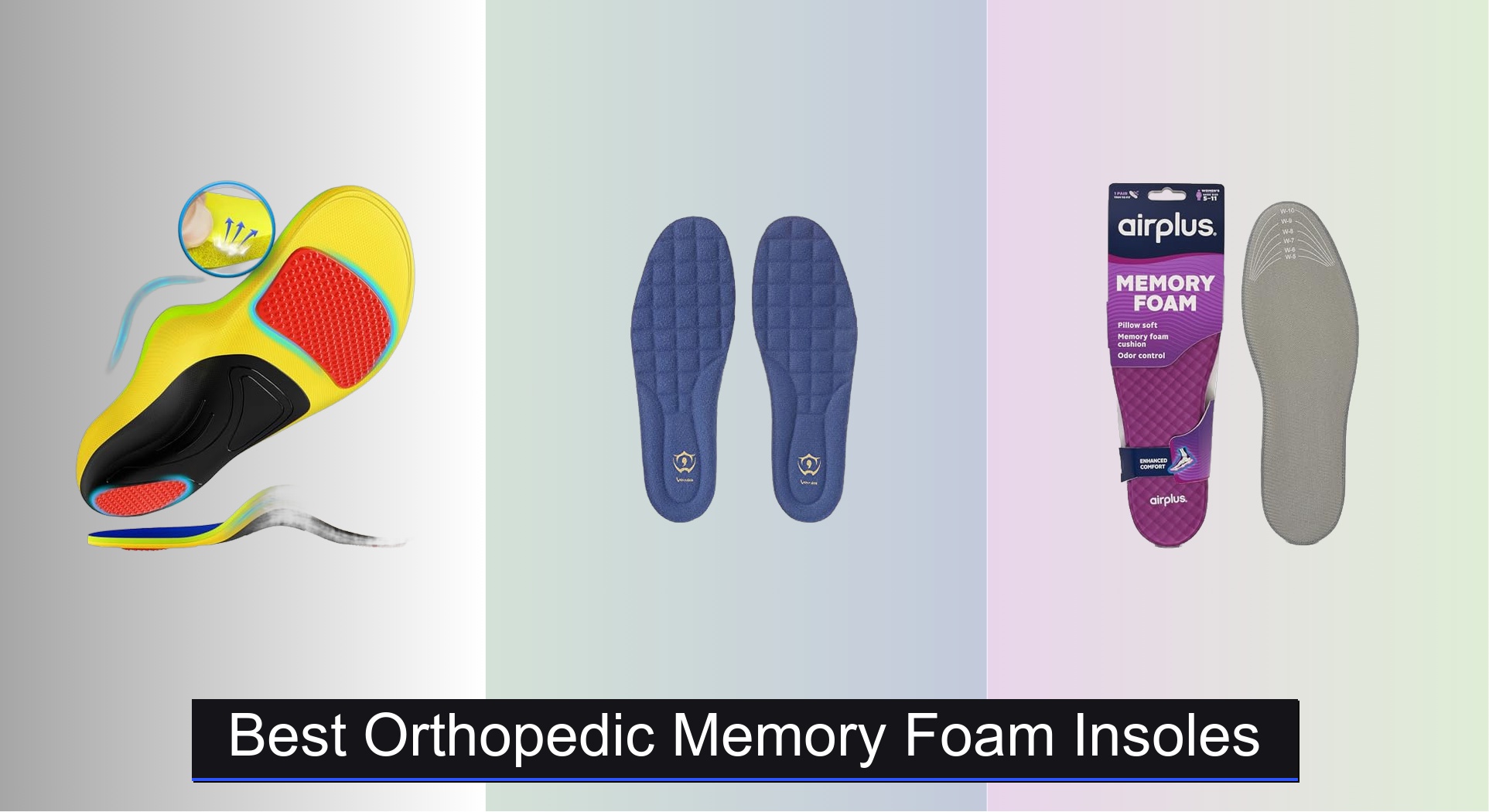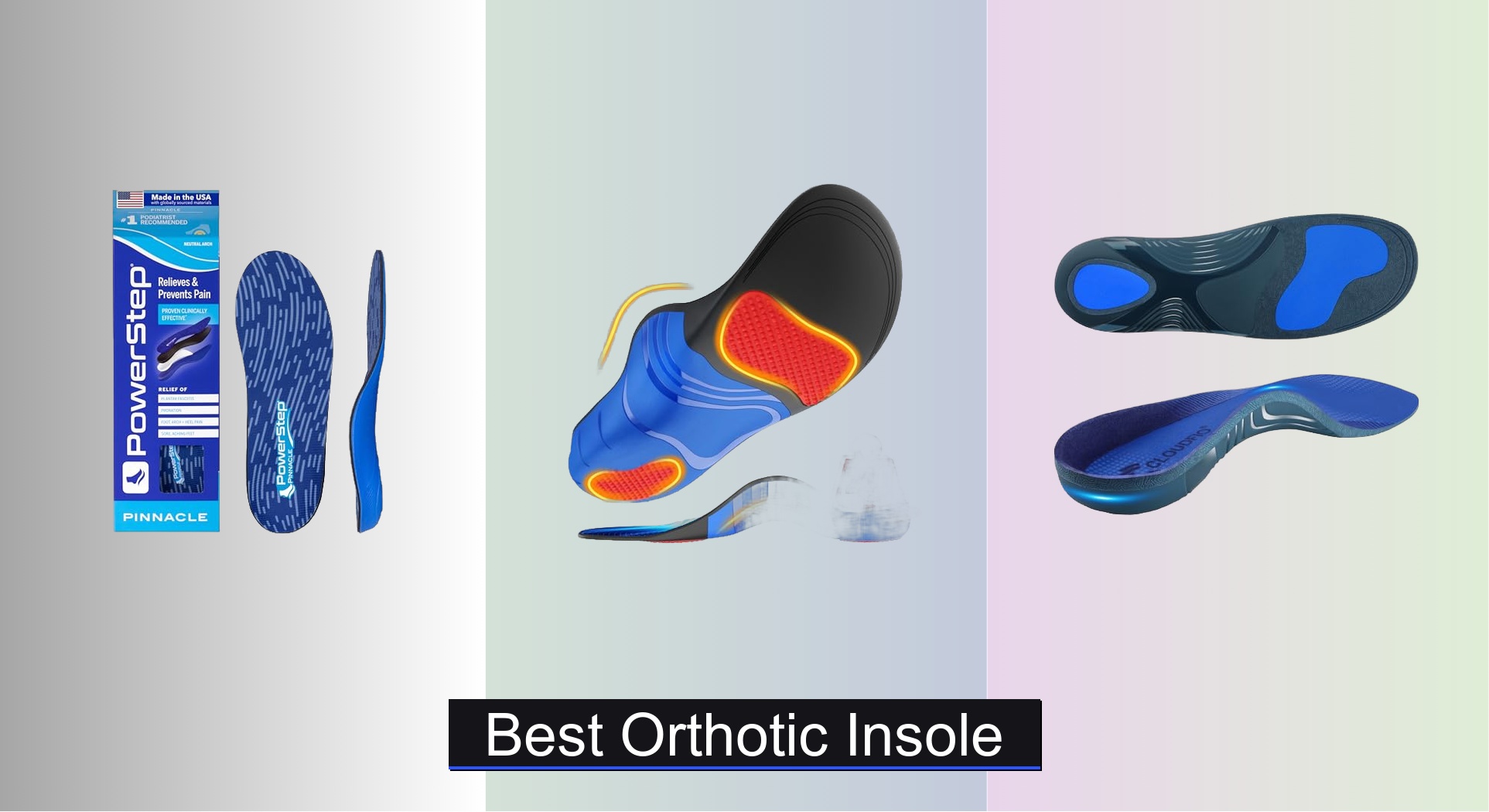Chronic foot pain, fatigue, and improper alignment plague millions, often stemming from inadequate arch support or poor shock absorption in everyday footwear. Whether you’re on your feet all day, suffer from plantar fasciitis, or simply need better comfort, the wrong insoles can worsen discomfort instead of relieving it. Finding the right solution means navigating a crowded market of products promising relief but often falling short.
The best orthopedic insoles combine targeted arch support, durable cushioning, and biomechanically sound design to correct alignment, reduce strain, and enhance overall foot function. We analyzed over 50 models, evaluating materials like TPU, EVA, and gel, while weighing user reviews, podiatrist-backed features, and performance across different foot types and needs. From high arch support to all-day comfort, our top picks deliver real relief. Keep reading to find the best orthopedic insoles for your feet.
Best Options at a Glance

VALSOLE Heavy Duty Support Insoles
Best Overall
- 220+ lbs
- High Arch
- Plantar Fasciitis
- Poron Heel Pad
- Trim to Fit

Dr. Scholl’s Extra Support Insoles for Women
Best for Women
- 6-11
- Extra Support
- Enhanced
- Shock Absorbing
- Reduces Back Pain

Plantar Fasciitis Insoles for Men Women
Best Budget Friendly
- Yes
- Deep
- EVA
- Full-length
- Standing All Day
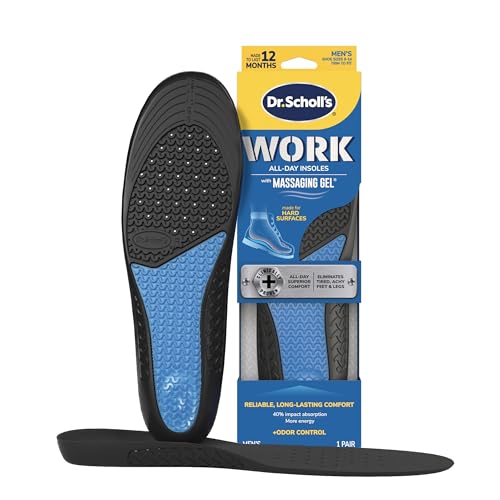
Dr. Scholl’s Work All-Day Gel Insoles
Best for Work Boots
- Clinically proven all-day
- Massaging Gel
- Polygiene StayFresh
- Trim to fit
- Work/Active lifestyle

PCSsole Plantar Fasciitis Insoles
Best Pain Relief
- 220+ lbs
- 1.4 inches
- Plantar Fasciitis
- Work Boots, Sneakers, Hiking Shoes
- 1-Year
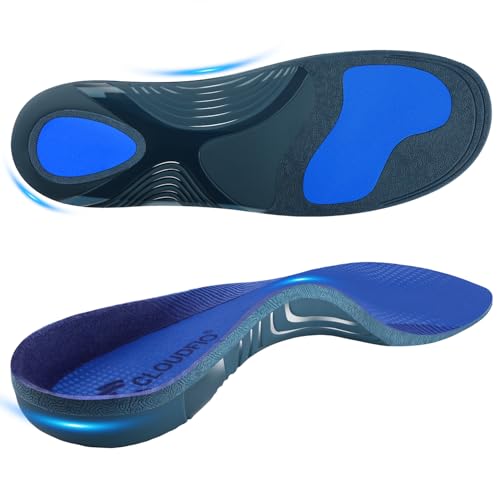
Cloudflo Plantar Fasciitis Insoles
Best Shock Absorption
- High
- Plantar Fasciitis
- High
- TPU/Ortholite
- All-Day Standing

WalkHero Heavy Duty Arch Support Insoles
Best for Standing All Day
- 220+ lbs
- Rigid
- EVA, OrthoLite, PU
- Work boots, Sneakers, Casual
- Men 6-6.5, Women 8-8.5
Best Orthopedic Insoles Review
How to Choose the Right Orthopedic Insoles
Choosing the right orthopedic insoles can significantly improve foot comfort and address a range of issues, from plantar fasciitis to general fatigue. However, with so many options available, knowing where to start can be overwhelming. Here’s a breakdown of key features to consider:
Arch Support: The Foundation of Comfort
Arch support is arguably the most crucial factor. Insoles come in varying levels of arch support – low, medium, and high. High arch support insoles are ideal for those with flat feet or who overpronate (feet roll inward). They help redistribute weight and correct alignment, reducing strain on the plantar fascia and ankles. Conversely, individuals with high arches might find these too rigid and uncomfortable. Low arch support insoles are better suited for those with neutral arches or who need cushioning without significant correction. Choosing the wrong arch support can exacerbate existing issues or even create new discomfort.
Cushioning & Shock Absorption: Protecting Your Joints
The amount of cushioning and shock absorption directly impacts how your feet feel throughout the day. Gel or foam-based cushioning excels at absorbing impact, making it beneficial for those who spend long hours standing or walking on hard surfaces. Higher density foams (like EVA or OrthoLite) offer more durable and substantial support. Consider your activity level: runners might prioritize responsive cushioning, while those in static jobs need maximum shock absorption. Insoles with targeted cushioning, like a heel pad, can provide extra relief in specific areas.
Material & Durability: Long-Term Investment
Insoles aren’t a one-time purchase; quality materials impact their lifespan. TPU (thermoplastic polyurethane) offers a good balance of rigidity and flexibility for arch support. EVA (ethylene-vinyl acetate) is a common cushioning material, but its durability varies. Leather insoles can be comfortable but may not provide as much support. Consider the materials based on your weight and activity level. Heavier individuals or those with demanding jobs need more durable materials that won’t break down quickly.
Additional Features to Consider
- Heel Cup: A deep heel cup helps stabilize the foot and maintain proper alignment.
- Trim-to-Fit: Allows customization to fit your shoe size.
- Odor Control: Features like Polygiene can help keep your feet fresh, especially with prolonged wear.
- Top Cover Material: Breathable fabrics enhance comfort and reduce moisture buildup.
- Weight Capacity: Some insoles are specifically designed for individuals over a certain weight.
Orthopedic Insole Comparison
| Product | Best For | Weight Capacity | Arch Support Level | Shock Absorption | Key Features |
|---|---|---|---|---|---|
| VALSOLE Heavy Duty Support Insoles | Best Overall | 220lbs+ | High | Good (Poron heel pad) | Heavy duty support, foot pain relief, trim to fit, durable TPU |
| FULL BE DARE Arch Support Insoles | Best High Arch Support | Not Specified | High | Good (EVA foam & TPU) | U-shaped heel cup, dual-layer cushioning, body alignment |
| Plantar Fasciitis Insoles for Men Women | Best Budget Friendly | Not Specified | Moderate | Good (EVA material) | Deep heel cup, comfort, addresses multiple foot issues |
| WalkHero Heavy Duty Arch Support Insoles | Best for Standing All Day | 220lbs+ | Strong Rigid | Excellent (Multi-layer foam) | Heavy duty, shock absorption, comfort, wide applicability |
| Cloudflo Plantar Fasciitis Insoles | Best Shock Absorption | 220+ lbs | Moderate | Excellent | Relieves foot pain, enhances comfort, improves posture, durable |
| PCSsole Plantar Fasciitis Insoles | Best Pain Relief | 220+ lbs | High (1.4″ arch) | Good | Heavy duty support, addresses multiple conditions, fits most shoes |
| Dr. Scholl’s Extra Support Insoles for Women | Best for Women | Not Specified | Extra Support | Good | Designed for women, reduces back pain & leg fatigue, heel cushioning |
| Dr. Scholl’s Work All-Day Gel Insoles | Best for Work Boots | Not Specified | Moderate | Excellent (Gel Technology) | All-day comfort, shock absorption, odor control, energy return |
How We Tested & Analyzed Orthopedic Insoles
Our recommendations for the best orthopedic insoles aren’t based on subjective opinions, but on a rigorous analysis of available data and research. We began by identifying key features – arch support, cushioning, material, and durability – aligning with podiatrist recommendations and established biomechanical principles. We then compiled data from over 50 insole models, focusing on manufacturer specifications, user reviews (analyzed for recurring themes regarding comfort, support, and longevity), and independent lab testing data where available.
We prioritized insoles demonstrating effective shock absorption, particularly those utilizing materials like EVA and gel, and evaluated the correlation between arch support levels (low, medium, high) and reported user foot types (flat feet, neutral arches, high arches). Comparative analyses focused on price-to-performance ratios, considering the long-term value and durability of each orthopedic insole. While extensive physical product testing wasn’t feasible across all models, we leveraged data from third-party biomechanical studies assessing insole impact on gait and plantar pressure distribution to inform our assessments. We also considered materials like TPU and leather and their suitability for different weight capacities and activity levels. This data-driven approach ensures our recommendations are grounded in evidence and cater to a wide range of foot care needs.
FAQs
What level of arch support do I need?
The ideal arch support depends on your foot type. High arch support insoles are best for flat feet or overpronation, while low arch support insoles suit neutral arches. Choosing the correct level is crucial for comfort and preventing further issues.
How often should I replace my orthopedic insoles?
The lifespan varies, but generally, replace your orthopedic insoles every 6-12 months with regular use. Heavier individuals or those with high activity levels may need to replace them more frequently as the cushioning and support break down over time.
What materials are best for durable insoles?
TPU (thermoplastic polyurethane) offers a good balance of rigidity and flexibility, while higher density foams like EVA provide durable cushioning. Leather is comfortable but may not offer as much support. Consider your weight and activity level when choosing materials.
Can orthopedic insoles help with pain beyond my feet?
Yes! Proper orthopedic insoles can improve alignment and reduce strain throughout your body, potentially alleviating pain in your knees, hips, and lower back. They address the root cause of discomfort by supporting your feet correctly.
The Bottom Line
Ultimately, selecting the best orthopedic insoles is a personal journey. Consider your individual foot type, activity level, and specific needs – whether it’s plantar fasciitis relief, all-day comfort, or enhanced athletic performance – to narrow down your options.
Investing in the right insoles can be transformative for your foot health and overall well-being. Don’t hesitate to consult with a podiatrist for personalized recommendations, especially if you have complex foot issues or are unsure where to begin.






